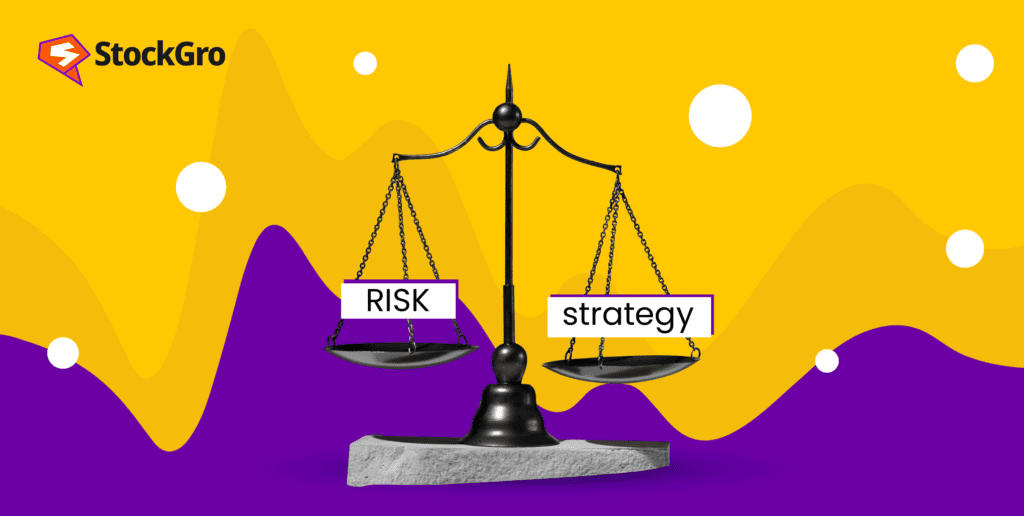
Risk, as a concept, is something investors take into account every single time they make a trade or invest in a fund. Risk defines most investment decisions and strategies, and it is risk that also defines which assets you invest in and which you pass on.
In this article, we’re going to explore what risk tolerance is, how you can find out your own risk tolerance, and how to choose investments depending on your personal investment goals.
Defining risk tolerance
Risk tolerance in investing represents your comfort level with potential investment losses. It is usually not a number but a spectrum, ranging from conservative (low tolerance) to aggressive (high tolerance).
You may also like: Key risks in investing in the stock market
There are several factors that influence and define your risk tolerance:
- Age – Typically, younger investors have their whole lives ahead of them and thus have longer time horizons. They can stomach higher risk for potentially greater returns. As you age, however, priorities shift from getting market beating returns to preservation of capital, leading to a more conservative approach.
- Personal financial goals – Depending on what you’re investing for, you could have differing tolerance for risk. For instance, if you’re saving for retirement and are in your 20s, you can take higher risk for your investments. Shorter-term goals, like buying a car, have less wiggle room for volatile markets.
- Financial situation – If you’re a young graduate right out of college in an entry level job and ₹20,00,000 in debt, you can’t take much risk with your savings. However, a few years later with a stable income and a sizable emergency fund, you can allow for more risk.
- Personality – Your personal investment strategy is also at play. While all of the other factors are generalisations, your personal outlook towards the market also plays a leading role in how you invest money. If you’re unnaturally comfortable with volatility, you could invest all your money in crypto opposed to bonds, for instance.
Figuring out what your risk tolerance is
There are several ways of figuring out how much risk you’re comfortable tolerating. You could analyse your previous financial decisions and ask yourself questions like, “Do I feel comfortable with the amount of money I’m losing in the market right now?”, and “How long do I think I can hold on to this money before I have to book my losses and exit?”
Your risk tolerance also decreases with debt. The more debt you have on your credit cards, the larger your mortgage payments are, or the more expensive car you buy on a loan, the less risk you can take with your income.
Also Read: Understanding credit cards: What are they, and how do they work?
Another way of knowing if you’re financially stable enough to take risk is thinking about how you’re going to handle a major expense or a job loss. Would you be able to meet your daily expenses with cash?
While these questions will certainly help you understand the concept of risk, we encourage you to consult a financial advisor who has specialised tools to understand your risk tolerance. They can analyse your financial situation, goals, and risk tolerance to provide personalised recommendations.
Types of investments for different risk profiles
| Asset Class | Risk Level | Conservative | Moderate | Aggressive |
| Cash | Very Low | ✓ | ✓ | ✓ |
| Investment Grade Bonds | Low | ✓ | ✓ | ✓ |
| Real Estate Investment Trusts | Moderate | ✓ | ✓ | ✓ |
| Dividend-Paying Stocks (Blue-chip, established companies) | Moderate | ✓ (Select few) | ✓ | ✓ |
| Balanced Funds (Mix of stocks, bonds, and cash) | Moderate | ✓ | ✓ | ✓ (Limited) |
| Growth Stocks (High-potential, young companies) | Moderate to High | X | ✓ | ✓ |
| Small-Cap Stocks (Smaller companies with high growth potential) | High | X | ✓ (Limited) | ✓ |
| Emerging Markets Stocks (Stocks from developing countries) | High | X | X | ✓ (Very cautiously) |
| Commodities (Oil, gold, agricultural products) | High | X | X | ✓ (Very cautiously) |
| Cryptocurrency (Bitcoin, Ethereum) | Extremely High | X | X | ✓ (Very cautiously) |
Points to note about the table:
- This table is a general guideline, and individual investments within each asset class can vary in risk. Please consult an investment professional for better clarity before investing.
- Limited suitability under investor portfolios means that even though this asset class can be included, they must be in small amounts for diversification purposes.
- Aggressive investors should exercise caution and conduct thorough research before investing in high-risk asset classes.
As you can figure out from the table above, not all investments are made equal. Some investments have inherently more risk than others. Also, keep in mind that even though there are financial products that you have the ability to invest in, it doesn’t mean you should.
For instance, derivative contracts like options and futures are not everyone’s cup of tea. While there are several traders who make money using derivative contracts, you should know that these trades come with leverage, which is sometimes 5-10 times your capital. Hence, when you make money you make a lot, but the same goes with when you lose too.
Also Read: Futures vs. Options: Differences every investor must know!
Conclusion
Typically, when choosing a portfolio, you must remember to invest your capital, no matter how little it may be, in various assets throughout the market. By doing this, you ensure that even though some investments might not do well due to market conditions, others might pick up the slack.
Diversification and periodic rebalancing of your portfolio in accordance with your changing risk tolerance is absolutely essential to managing your personal portfolio.
Good luck!

